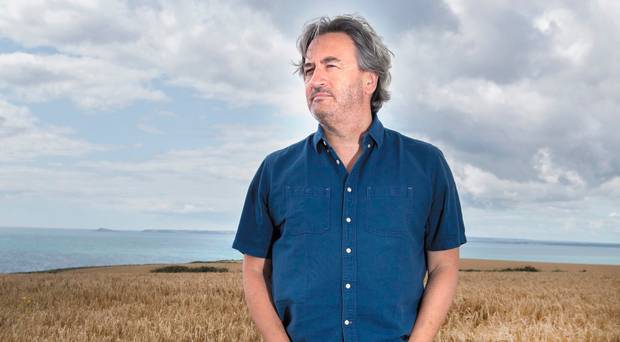Wounds: A Memoir of Love & War
by Fergal Keane (William Collins, £18.99)
Fergal Keane is well-known as a foreign correspondent, especially for his coverage of Africa and Serbia. His main area of interest is war and its effect on those who have been caught up in it. In his latest book he looks closer to home, towards a conflict in which his grandmother and granduncle were involved.
Hannah Purtill (later Mrs William Keane) and Mick Purtill were active in the War of Independence in north Kerry from 1919 to 1921– the former as a member of Cumann mBan, the latter as an IRA Volunteer.
The struggle in north Kerry between the Crown forces and the IRA was no different from that reported throughout the rest of the province of Munster. However, in Kerry there were two high-profile assassinations, that of District Inspector Tobias O’Sullivan and Sir Arthur Vicars.
O’Sullivan attracted attention, when as sergeant in charge of the RIC barracks at Kilmallock in Co. Limerick he, with his comrades, courageously defended it against an attack by some 40 members of the IRA in May 1920. He was decorated and promoted to be district inspector in north Kerry. The aim behind his appointment was clear.
Mutiny
Earlier there had been a mutiny by some members of the police in the Listowel barracks. O’Sullivan was expected to stiffen the resolve of his colleagues in carrying out the policy of seeking out and destroying the IRA. He did not disappoint the authorities and thus became an IRA target.
Three members of the local Moyvane company shot O’Sullivan down in the street just yards from his home and in the sight of his wife and one of his children. With the town awash with members of the Crown forces it was a reckless act and because of some extraordinary circumstances those involved were most fortunate to escape alive from the scene.
Sir Arthur Vicars served as Ulster King of Arms and principal herald of Ireland from 1893 to 1908. He was responsible for the Irish office of arms in Dublin Castle, and was keeper of the Regalia of the Order of St Patrick, the so-called ‘Irish crown Jewels’.
These were stolen in 1907 and when they were not recovered he was dismissed (largely at the insistence of Edward VII) from his post. He retired to reside in the mansion of his deceased half-brother, George Gun Mahony, at Kilmorna, three miles from Listowel.
As the struggle between the Crown forces and the IRA became more intense he was strongly advised to leave his vulnerable location. He ignored the advice and when there was an influx of military into the area he frequently entertained the officers.
In April 1921 the IRA ambushed some officers and their guard returning to Listowel from a visit to Vicars. A member of the IRA was killed. The IRA blamed Vicars for his death and a week later he was taken from his home and shot dead. At the same time his house was looted and burned.
While there was widespread regret in Listowel at the manner in which the lives of D. I. O’Sullivan and Sir Arthur Vicars had been ended, many people in the town were heart-broken at the killing of their neighbour, Fishery Inspector James Kane. He was a retired RIC sergeant and the IRA intercepted information he had provided with regard to the O’Sullivan assassination.
The local IRA were directed to shoot him as an informer. Keane describes in detail his abduction and his poignant last hours. Two years before Kane’s body was found by his family with a sign claiming he was an informer, his son, who was a cripple, was robbed on the ‘Big Bridge’ and thrown to his death into the river.
It was generally known who the culprit was. He was neither a member of the Crown forces, nor the IRA; but owing to the unsettled times, was never brought to justice. Subsequently just the mention of the Kane family was enough to bring tears to the eyes of the family’s former neighbours.
Excellent chronicler that he is, Keane weaves the incidents in the War of Independence in north Kerry into an interesting narrative. G.K. Chesterton once wrote: “The great Gaels of Ireland / Are the men that God made mad, / For all their wars are merry, / And all their songs are sad.”
Nothing merry here. Fergal Keane’s narrative is just immensely sad.



